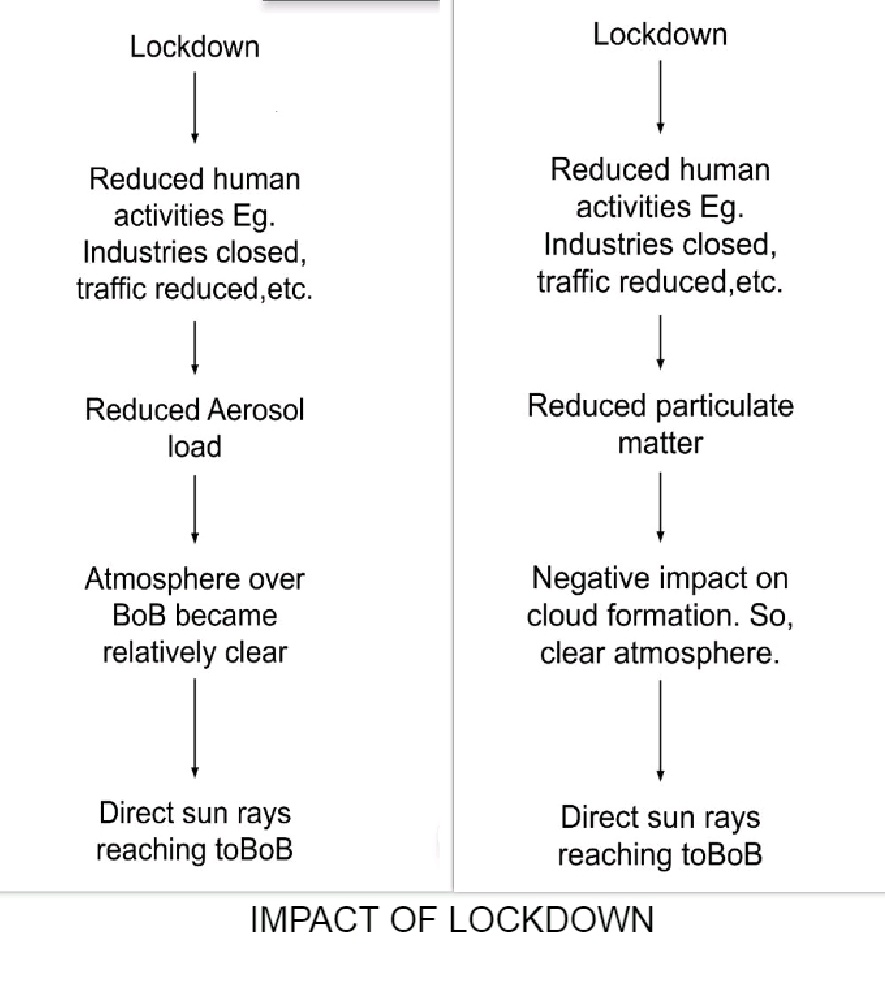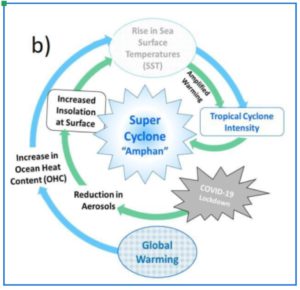Super Cyclone Amphan
Super Cyclone Amphan started as a depression in the southeast Bay of Bengal on 16th May 2020. It developed into a Super Cyclone in less than 48 hours. Finally, it made landfall in the evening hours of 20th May 2020 through the Sundarbans between West Bengal and Bangladesh. Amphan is the equivalent of a Category 5 hurricane on the Saffir-Simpson Hurricane Wind Scale. Thailand proposed the name “Amphan” (pronounced as “Um-pun” meaning ‘the sky’) in 2004.
According to the National Cyclone Risk Mitigation Project (NCRMP), the Indian subcontinent is exposed to “nearly 10 percent” of the world’s tropical cyclones.
What is a super cyclone?
Simply super cyclones are tropical storms, where wind speeds cross 220kmph (137mph).
It is the spiral arrangement of thunderstorms rains, a low-pressure center, and strong winds.
History of a Super Cyclone
A Super Cyclonic Storm struck Orissa on 29 October 1999. It was also known as Cyclone 05B.
The estimated maximum wind speed reached 260-270 kmph in the core area. It had claimed more than 10,000 lives.
What causes a tropical cyclone?
Tropical cyclones, hurricanes, or typhoons form when convection causes warm, moist air above the ocean to rise. They begin as a group of storms when the water gets as hot as 80 °F (27 °C) or hotter.
The Coriolis effect made by the Earth’s rotation causes the winds to rotate.
Why is the Bay of Bengal a hotbed of tropical cyclones?
The BoB has a higher Sea Surface Temperature (SST) because:
Constant Inflow of Fresh Water from the Ganga and Brahmaputra rivers makes it impossible for the warm water to mix with the cooler water below. This makes it ideal for a cyclonic depression.
Slow Flowing Winds keeps temperatures relatively high around the year.
Higher Rainfall provides required humidity for cyclone formation.
In 2020, the BoB has observed record summer temperatures due to global warming.
Tropical cyclones are primarily fueled by the heat released by the oceans.
Why are tropical cyclones not so frequent in the Arabian Sea?
The BoB sees about five times as many cyclones as the Arabian Sea. In addition, cyclones in the Bay are stronger and deadlier.
The relatively colder waters of the Arabian Sea are not conducive to the formation and intensification of cyclones.
The Arabian Sea receives stronger winds. These winds help in dissipating the heat.
Also, the lack of constant freshwater supply helps the warm water mix with the cool water, reducing the temperature.
Why is Tropical Cyclones frequency increasing in recent years?
The oceans are absorbing more than 90% of all the excess heat trapped by the human-made Green House Gas (GHG) emissions.
This is rapidly increasing ocean surface temperatures, favoring the genesis and intensification of cyclones.
Overall, there is seemingly a preferential increase in category 4 & 5 cyclones throughout the globe in recent years.
Did COVID-19 lockdown brew “Amphan” into a super cyclone?
The pre-existing high summer sea surface temperature (SST), climate change enhanced ocean heat content (OHC), lockdown induced decline in aerosols & clouds, are all perfect ingredients for genesis potential and subsequent intensification of any cyclonic activity.
Image- Possible mechanism of amplification of the strength of cyclone initiated by the lockdown.
Credit-www.preprints.org
Naming procedure of Tropical cyclone
The Regional Specialized Meteorological Centre (RSMC) of Tropical Cyclones in New Delhi is the agency responsible for naming cyclones in IOR.
Since 2004 on the initiative of India, Maldives, Myanmar, Oman, and Thailand started the process of giving the name to cyclonic storms. Later on other countries Bangladesh, Srilanka, Pakistan, and Oman also joined the panel.
All countries contributed a set of names. These are assigned sequentially on the basis of the first Alphabet of the member country.
As soon as the cyclone reaches into any area in the ambit of these 8 countries, the predefined name is given to this cyclone.
Some recent cyclones according to the naming list are Fani, Vayu, Bulbul, Pawan, Amphan.
Grading of Cyclones
Tropical cyclones in the Bay of Bengal are graded according to maximum wind speeds at their center.
At the lower end are depressions that generate wind speeds of 30 to 60 km per hour, followed by:
Also read-



👍👍
😊😊😊
Like!! Really appreciate you sharing this blog post.Really thank you! Keep writing.